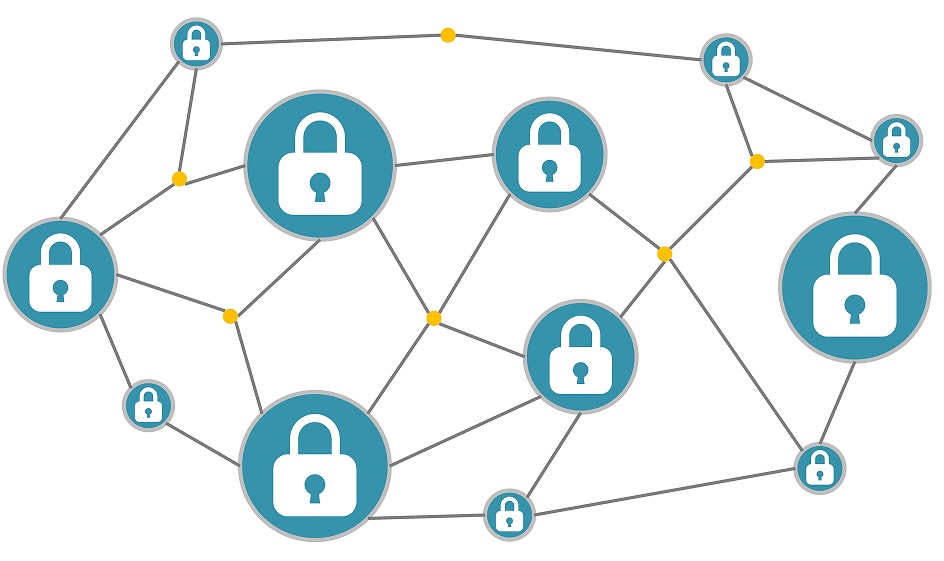How does blockchain technology do to be safe?

September 8, 2020
After learning what is blockchain technology and how it works, let us understand how does blockchain technology do to be safe and where it is going? Blockchain has been most related in economics through bitcoins and cryptocurrencies revolution, hence it has to be a really secure background technology where they are based; being its main goal to eliminate intermediaries and create a decentralized system.
How does blockchain technology do to be safe?
Blockchain is a unique, shared and digitized record that cannot be modified once has been agreed and verified by a transaction. It allows asset secure transfer from one place to another, without third parties intervention because all transactional parts maintain a copy of that record, although they do not have the need to know each other. Which means that it would be very difficult to modify each of its copies globally distributed in several nodes of a network. Basically is like a binnacle that is almost impossible to falsify. We could really consider that what is recorded are atomic changes in a system state.
Security and confidentiality
Any information that needs to be preserved intact and must remain available can be stored on a blockchain. Furthermore, if it is stored encrypted, its confidentiality can be guaranteed, since only those who have the encryption key can access it. In this sense, blockchain technology proposes a model in which authenticity is not verified by a third party but by a whole network of nodes that participate in it. Hence, no transfer of value is carried out through an intermediary, but through consensus on data integrity, allowing the information to be stored at all times in a transparent an atomic way. This property allows its application in a distributed environment so it can act as a non-relational public database that contains an undeniable history of information. In practice, thanks to asymmetric cryptography and summary or hash functions, it has allowed the implementation of a distributed ledger that allows supporting and guaranteeing data security.
For this reason, it is considered a technology in which the reliable state of the system is built, reached and strengthened by members themselves; even in an environment in which there is a minority of nodes in the network with malicious behavior. Since to compromise data, an attacker would require a greater computing power and presence in network than the resulting of the sum of all the remaining nodes combined. Or if they wanted to cause a denial of service, they should kill all nodes on network, since at least one of them is sufficient for information to be available.
That is why blockchain technology is especially suitable for scenarios in which it is required to increasingly store data ordered in time, be it money or another valuable asset, without the possibility of modification or review and whose trust is intended to be distributed. In addition, each node in the network uses certificates and digital signatures to verify the information and validate the transactions and data stored in the blockchain, thus ensuring information authenticity.
Where does blockchain is going?
Experts perceive the arrival of the blockchain as a system that will change the way we understand business and society. One of its greatest potentials is in smart contracts since agreements and transactions can be made in a confident way without revealing confidential information between the two parties and without the need for intermediaries. But not only this, based on the same concept, blockchain will be essential for the Internet of things. Appliances will be able to communicate with each other in a secure and transparent way.
In other hand, in politics electronic voting (which has not resisted hacking) could now be a viable option for voters with the assurance that their identity will not be impersonated and the convenience of not having to travel to the polling station.
Currently there are many projects underway using blockchain, such as:
- Hyper Ledger Project focuses on building distributed solutions for permissioned blockchains and consortium networks.
- Quant (QNT) delivers interoperability of private Distributed Ledger Technologies and public blockchains across many banks and financial institutions.
- R3 Cev is a fin tech company that leads researching and development of blockchain technologies in a financial system.
- Decentralized Cloud Storage (Storj) is a cloud storage platform decentralized and end-to-end encrypted.
- Ocean Protocol (OCEAN) helps developers build apps and marketplaces to privately and securely publish, exchange and consume data.
- Proof of Existence is a notary public service online which bring to users a platform to upload digital documents and get them verified by the blockchain.
There are so many others projects and ideas. We can even imagine scope dimensions of this technology when we know that today China has approved 224 new blockchain projects of large companies in country. So, we can make our hypothesis.
Conclusion
In conclusion, how does blockchain technology do to be safe and where it is going? Blockchain is definitely an improvement for almost any business if they no longer have it. It is undeniable that it can be the immutable and decentralized layer that Internet has always needed. This allows us to store information that can never be lost, modified or deleted. It is a reliable, decentralized registry, resistant to data manipulation, and where everything is registered. As the data is distributed in all nodes of the network; everyone participates equally, storing and validating all information.
It is a very powerful tool to communicate and store information in a reliable way; a decentralized model where the information is ours, since we do not depend on a company that provides the service. Finally, since each block is mathematically linked to the next block, once a new one is added to the chain, it becomes unalterable. So, all information registered in the blocks is immutable and perpetual.








